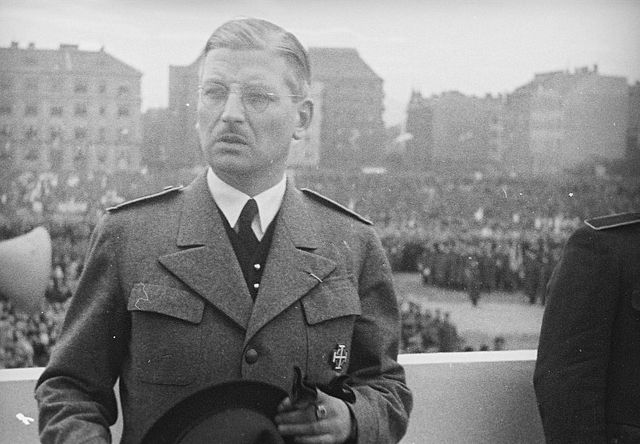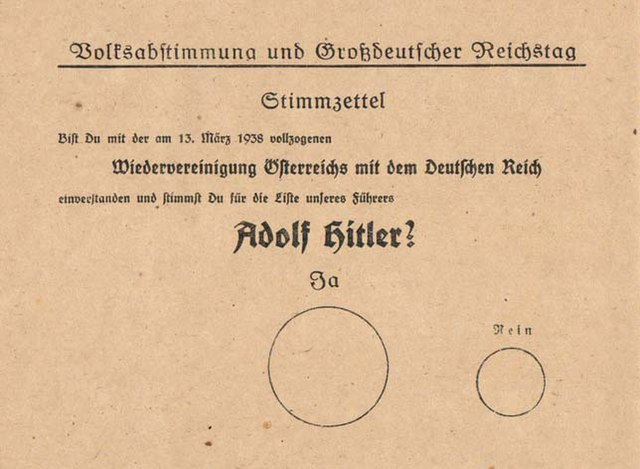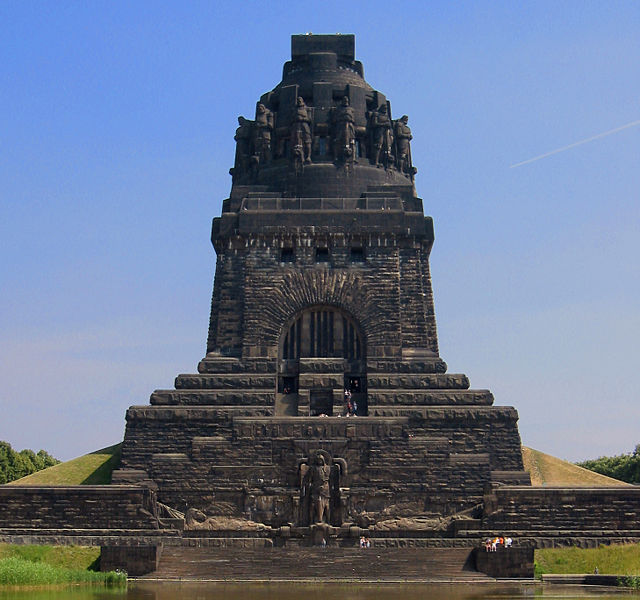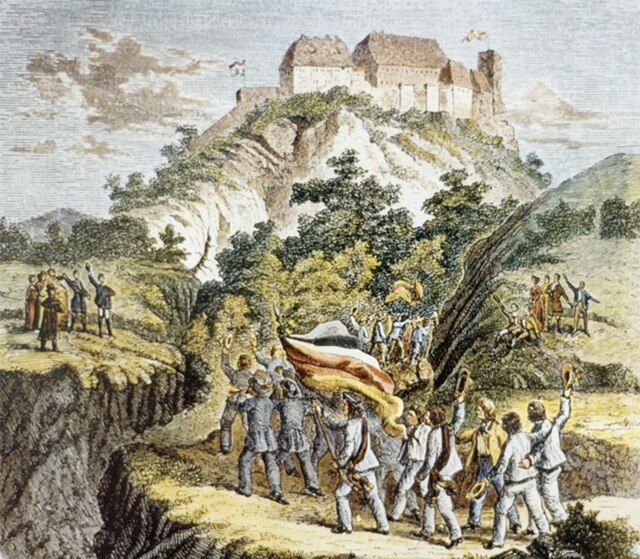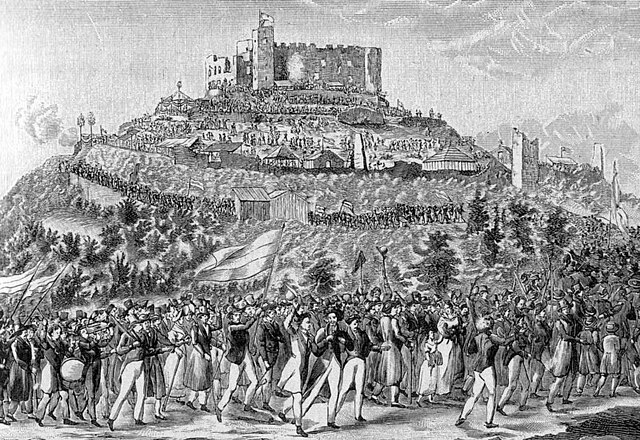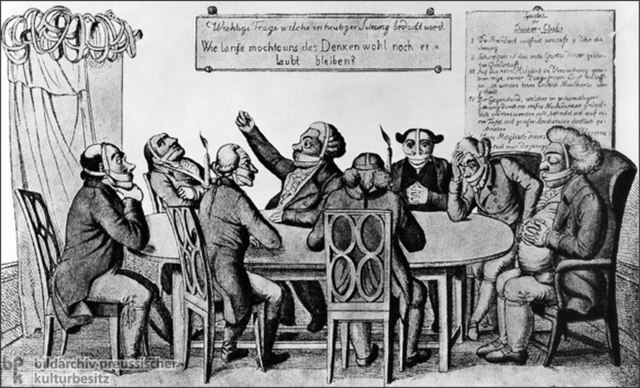The "German question" was a debate in the 19th century, especially during the Revolutions of 1848, over the best way to achieve a unification of all or most lands inhabited by Germans. From 1815 to 1866, about 37 independent German-speaking states existed within the German Confederation. The Großdeutsche Lösung favored unifying all German-speaking peoples under one state, and was promoted by the Austrian Empire and its supporters. The Kleindeutsche Lösung sought to unify only the northern German states and did not include any part of Austria ; this proposal was favored by the Kingdom of Prussia.
German unity as fiasco with each state viewing itself separate. Cartoon from Münchner Leuchtkugeln, 1848. Caption reads: "German Unity. A Tragedy in one Act."
First German National assembly at St. Paul's Church, Frankfurt 1848/49
Kurt Schuschnigg, Austrian chancellor from 1934 to 1938, strongly opposed Hitler's annexation of Austria to Nazi Germany.
Voting ballot from 10 April 1938. The ballot text reads, "Do you agree with the reunification of Austria with the German Reich that was enacted on 13 March 1938, and do you vote for the party of our leader Adolf Hitler?" The large circle is labeled "Yes", the smaller "No".
The unification of Germany was a process of building the first nation-state for Germans with federal features based on the concept of Lesser Germany. It commenced on 18 August 1866 with adoption of the North German Confederation Treaty establishing the North German Confederation, initially a military alliance de facto dominated by Prussia which was subsequently deepened through adoption of the North German Constitution.
The Battle of the Nations monument, erected for the centennial in 1913, honors the efforts of the German people in the victory over Napoleon.
In October, 1817, approximately 500 students rallied at Wartburg Castle, where Martin Luther had sought refuge over three centuries earlier, to demonstrate in favor of national unification. Wartburg was chosen for its symbolic connection to German national character. Contemporary colored wood engraving
Pro-nationalist participants march to the ruins of Hambach Castle in 1832. Students and some professionals, and their spouses, predominated. They carried the flag of the underground Burschenschaft, which later became the basis of the flag of modern Germany.
A German caricature mocking the Carlsbad Decrees, which suppressed freedom of expression



